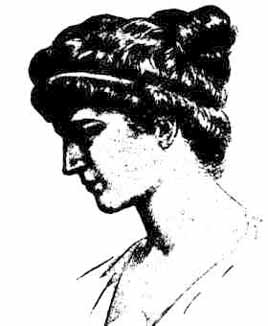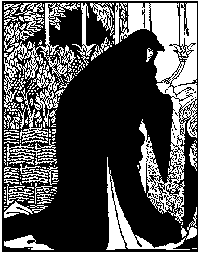Images of Women in Literature Chart II. (Text with Thumbnails)
One way for us to keep adding to the chart is to assign charaters we read about to these categories. Your assistance will be invaluable in this effort!! If you wish to see the Graphic Chart I. with the large images, Click Here.
|
Good!!! |
Not-so-Good |
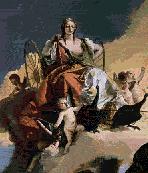  
The Earth Mother: Earth mother types occur frequently in mother characters in literature. One of the best is "Ma" in Steinbeck's The Grapes of Wrath. They are characterized by great courage, love for all people, fertility, forbearance, and abundance.
|
The Hearth-Keeper: The hearth-keeper may be a mother or gandmother, or she may be represented as a manager or provider. A good example of hearth-keeper is Pilate in Toni Morrison's Song of Solomon.. Hearth-keepers are characterized by maturity, wisdom of experience, and resourcefulness. |
 
The Goodwyfe: We know her. She is the one with dinner on the stove!! She hardly ever leaves the kitchen except to go to the parlor to play a little music if she is young, and, of course, she is in the bedroom, but we rarely see her there! We can recongize the Good Wyfe by many of her characteristics. She is pliable, cheerful, pretty, self-effacing. Chaucer's "The Wyfe of Bath" is considered a "realisitc" portrait because she does not exhibit these qualities. She rarely figures as a major character.
|
  
The Hag: Never a shortage of hags, witches, and crazy ladies. The Madwoman in the Attic was a standard of Victorian fiction--Charlotte Bronte's creation of Rochester's wife in Jane Eyre was only one of many. Sylvia Plath's young character, Esther, in The Bell Jar shows the kind of variation that can come from a closer investigation of a type. Characterized by ugliness, old age, poverty, strange beliefs or practices, instability. |
The Nun: Soliary, gentle, usually powerless. Naive. Holy. A modern writer, Anita Brookner, has written several books (Hotel du Lac) about modern spinsters who actually qualify as nuns in their behavior.Virginal and Solitary, the nun is a popluar figure of a woman for many reasons. She is trustworthy, but is usually the end-point of a female transformation, not the main character in the story. |

The Spinster: Spinsters were always minor characters in male-authored novels. They were powerless and rarely influenced plots in any significant way. Women writers, however, gave the spinster a prominent role in many novels. Jane Eyre is the prototype here, even though she gets her man at the end. A spinster is first characterized by her marital status--but she is almost always plain and mousey, thin, humorless, intelligent, and thrifty. This is to be kind to the oft-maligned class of women without men!! |
 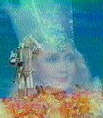 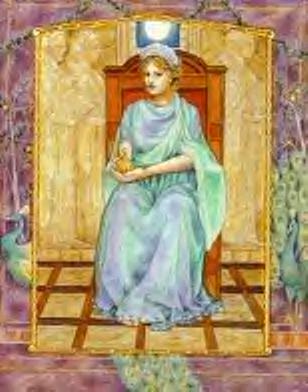
The Queen: a good Witch, Glenda or resigned Hera
|
The Wicked Queen: In addition to Hecate and Guinevere (by some accounts), we have Lady Macbeth, of course. In more recent novels, Queens have not figured very heavily, but we can find the equivalent in characters from TV shows like Dallas. |
| The Governess: | The Governess: |
|
The Mother: A mother is almost always a one-task individual. She is shown with the swaddling infant--or gravely guiding older children. But she rarely has toehr duties at hand.
|

The Stepmother: A Stephmother who is also a a wicked queen and a sorceress/witch. Snow White's stepmother has a raven, a cobweb, a book, an apple, and is working with live fire. Watch out for her!! (Image by Tuvia Kurtz, provided by Linda Thomas.) |
  
The Virgin and Variations: The Professional Virgin is often a War Goddess as well. Important to note the relationship of the "father' to these figures. Athena, Goddess of Wisdom, Minerva, Warrior Goddess of Wisdom, Freya, Goddess of War, Fertility, Death are all virgins by decision. The momentary virgin, or the accidental virgin is only a creature of the moment, and she is meant, in the course of the story, to transfer into another image--such as happens with Ophelia. The deflowering of the virgin is often an important plot point.
|
  
The Temptress: Women show up most often as the villian in literature in the guise of the Temptress. From Eve to Salome to Helen of Troy, and ever onward, woman is dangerous in that way. |

The Servant Girl: Cinderella |

The Poor Girl: The Miller's Daughter |
  
The Girl: The girl is always pretty, graceful, and innocent--but her sexualtiy is subdued. This is a very transitive state, as a woman can only be a "girl" like this for a few months, in literature. |
 
The Huntress: Artemis or Diana--girl of the forset and the hunt, associated with the moon and night. We see lots of huntress types in literature--even tho they never go near the woods.
|
   
The Beauty: Venus Aphrodite
|
  
The Medusa: |
